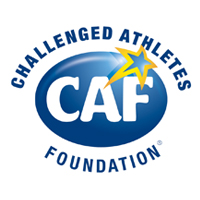Endurance Athletes’ Secrets on Sun Safety for the Badwater Ultramarathon
The biggest challenge for endurance athletes isn’t the competition—it’s sun exposure, according to the latest Sun & Skin News, a publication of The Skin Cancer Foundation.
Triathletes, for example, compete outdoors in three endurance sports back-to-back—swimming, bicycling, and running. If racers don’t carefully protect themselves, notes Scott B. Phillips, MD, the result could be premature skin aging and skin cancers, including melanomas.
About half of the triathletes recently surveyed by Dr. Phillips had skin problems, and 55 percent of those with problems reported sunburns – almost the same results obtained from 259 marathoners.
“One problem for endurance athletes is that they wear less clothing in races than they do in workouts, exposing more sin to the sun,” says Dr. Phillips, in the Department of Dermatology at the St. Elizabeth’s Hospital in Chicago, IL. “But the greatest about of exposure occurs during training, since athletes may work out several hours daily.”
Experienced competitors, however, learn many methods to avoid such threats. These strategies are advised for anyone exercising in the sun:
- Train early and/or late in the day, even if it means breaking workouts into two sessions. From 10 to 4, stay out of the sun. “People with jobs typically train before and after work, or during lunch hour,” says Dr. Phillips. “I’m less likely to train at lunch because of the high sun.”
- During training, cover as much skin as possible, wearing sweatpants or long shorts, and a long-sleeved shirt or sweatshirt. Wear socks to soak up sweat and absorb impact as well as block the sun. And shield your eyes with UV-blocking sunglasses.
- Wide-brimmed hats are too unwieldy for endurance sports, but wear a baseball-type cap to protect the forehead and front of the face.
- Use an SPF 15 or higher sunscreen on all exposed skin, up to 6:30pm or later on a summer’s day, even when it’s cloudy. Dr. Phillips also recommends lip balm, and stick sunscreens around the eyes, because these sunscreens are more resistant to sweating. Badwater recommends the prducts by Kiehl’s Since 1851.
- Even if a sunscreen is labeled “waterproof” or “water-resistant,” replenish it every two hours after.
“These few moments make a big difference in sun safety, and little difference in your competitiveness,” says Dr. Phillips.
The Skin Cancer Foundation, the only national and international organization concerned solely with cancers of the skin, conducts public and medical education programs and provides support for research and professional training to reduce the incidence, morbidity, and mortality of skin cancers. Sun & Skin News, a quarterly publication of the Foundation, provides information on a broad range of topics related to skin health, including prevention and treatment of skin cancers, the effectiveness of new sunscreen formulas and sunglasses, prevention and treatment of photoaging, and the danger of tanning parlors.
For additional information, contact:
The Skin Cancer Foundation
245 Fifth Avenue, Suite 1403
New York, NY 10016










